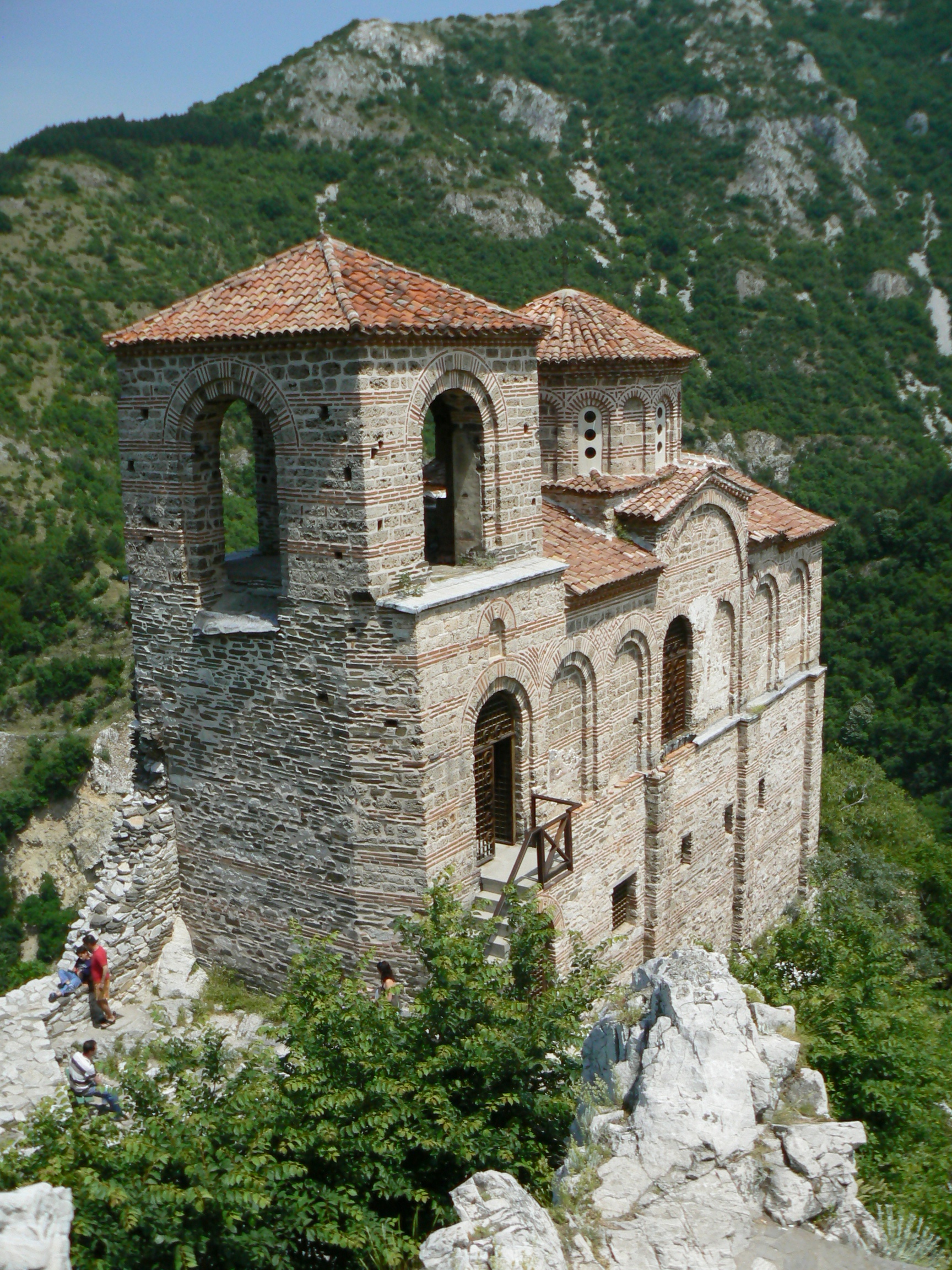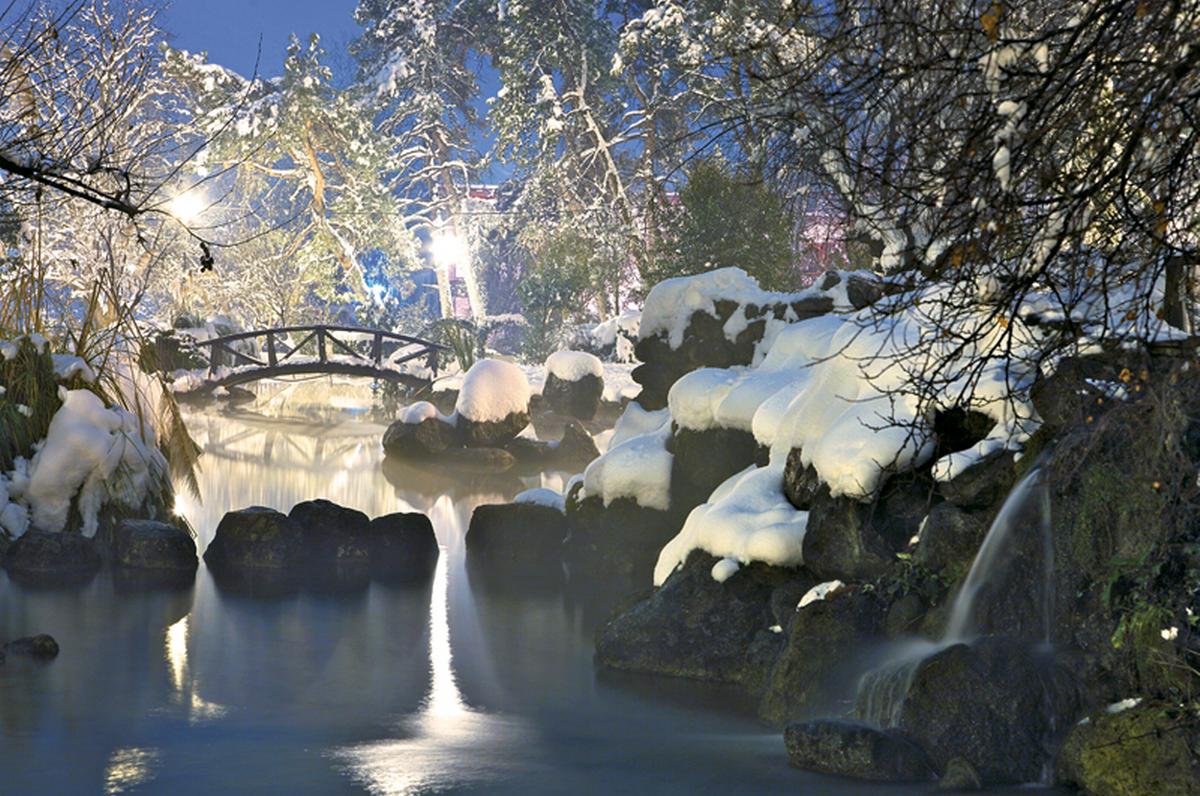|
Asenovgrad
Asenovgrad ( ) is a town in central southern Bulgaria, part of Plovdiv Province. It is the largest town in Bulgaria that is not a province center. Previously known as ''Stanimaka'' (; ), it was renamed in 1934 after the 13th-century tsar Ivan Asen II. Asenovgrad also includes the districts of Gorni Voden and Dolni Voden, which until 1986 were separate villages. According to the census data of 2021, the population of the city is 47 815 people. Above the town are the remains of the Asen Fortress, an old fortress that was strengthened under Tsar Ivan Asen II and turned into an important military post in the defense of the southern borders of the Second Bulgarian Kingdom.The city is known for its many churches, monasteries and chapels and is often called Little Jerusalem. It is also known as the "City of Bridal Gowns" because of the large number of ateliers and shops for wedding dresses and accessories. The majority of Asenovgrad residents are Bulgarians, with representatives of th ... [...More Info...] [...Related Items...] OR: [Wikipedia] [Google] [Baidu] |
Plovdiv Province
Plovdiv Province (: ''Oblast Plovdiv'', former name okrug, Plovdiv okrug) is a provinces of Bulgaria, province in central southern Bulgaria. It comprises 18 municipalities (общини, ''obshtini'', sing. общинa, ''obshtina'') on a territory of Bulgarian Provinces area and population 1999 — National Center for Regional Development — page 90-91 with a population, as of February 2011, of 683,027 inhabitants. The province is named after its administrative and industrial centre — the city of Plovdiv. Geography Plovdiv Province includes parts of the Upper Thracian Plain, the Rhodopes, Sredna Gora, the Sub-Balkan valleys ...[...More Info...] [...Related Items...] OR: [Wikipedia] [Google] [Baidu] |
Asen's Fortress
Asen's Fortress (), identified by some researchers as Petrich (), is a medieval fortress in the Bulgarian Rhodope Mountains, south of the town of Asenovgrad, on a high rocky ridge on the left bank of the Asenitsa River. Asen's Fortress is above sea level. History The earliest archaeological findings date from the time of the Thracians, the area of the fortress being also inhabited during the Ancient Roman and Byzantine Empire, Early Byzantine period. The fortress gained importance in the Middle Ages, first mentioned in the statute of the Bachkovo Monastery as ''Petrich'' in the 11th century. The fortress was conquered by the armies of the Third Crusade. In 1205 the Latin Duchy of Philippopolis, Duke of Philippopolis, Renier of Trit, fled from Philippopolis, which was under pressure from Kaloyan of Bulgaria, Tsar Kaloyan of Bulgaria, and took refuge in Asen's Fortress (at the time called Stanimaka). Renier of Trit would be besieged in the fortress for eleven months with just 40 kn ... [...More Info...] [...Related Items...] OR: [Wikipedia] [Google] [Baidu] |
List Of Cities And Towns In Bulgaria
This is a complete list of all cities and towns in Bulgaria sorted by population. Province capitals are shown in bold. Primary sources are the National Statistical Institute (NSI) and the Bulgarian Academy of Sciences. The largest city is Sofia, with about 1.4 million inhabitants, and the smallest is Melnik, with about 300. Towns are not necessarily larger than all villages. Indeed, many villages are more populous than many towns–compare for instance Lozen, a large village with more than 6,000 inhabitants, with Melnik. List See also *List of villages in Bulgaria * Nomenclature of Territorial Units for Statistics (NUTS) of Bulgaria *List of cities in the European Union by population within city limits *List of European cities by population within city limits References External links Map main cities in BulgariaaVisitmybulgaria.comMap of Bulgarian towns at BGMaps.com* Veliko Tarnovo of BulgariaMap of Bulgaria {{DEFAULTSORT:List Of Cities And Towns In Bulgaria ... [...More Info...] [...Related Items...] OR: [Wikipedia] [Google] [Baidu] |
Tane Nikolov
Tane Nikolov (; 9 March 1873 – 19 January 1947) was a Bulgarian revolutionary and member of the revolutionary movement in Macedonia, Thrace and Pomoravlje. He was among the leading members of the Secret Macedonian-Adrianople Revolutionary Organization, Internal Western Outland Revolutionary Organisation and the leader of the Internal Thracian Revolutionary Organisation. Nikolov was also participant in the wars for National unification of Bulgaria. Early life Tane Nikolov was born in Haskovo in the family of Nikola Zhekov and Rada Stoeva who both come from the village of Gorski izvor near Dimitrovgrad. His nephew was to become yet another famous Bulgarian revolutionary – Nikola Koev (Mamin Kolyo). Tane finished first grade in Haskovo in the already liberated Bulgaria. He was still young when he lost first his wife and soon after his daughter to an illness. In the end of June 1902 he quit the army and joined the revolutionary movement in Eastern Thrace. There he met Bori ... [...More Info...] [...Related Items...] OR: [Wikipedia] [Google] [Baidu] |
Naousa, Imathia
Naousa (, historically , ; ), officially The Heroic City of Naousa, is a city in the Imathia regional unit of Central Macedonia, Greece. It is located at the foot of the Vermio Mountains. According to the 2021 Greek census, 2021 census, the city population was 19,706 inhabitants and that of the homonymous metropolitan area 30,054 inhabitants. In 1955, a royal decree designated Naousa as a ''heroic city'', honoring the struggle of its inhabitants during the Greek War of Independence. A monument at the Stoubanoi area, near the river Arapista, commemorates the sacrifice of the women who, in April 1822, preferred death instead of being captured by the Ottomans, and jumped into this river with their children. Naousa is famous for its carnival its ski resort and its wine production, as well as for the archaeological sites discovered at the area of Mieza (Macedonia), ancient Mieza. Since 2021, it is a member of the European Institute of Cultural Routes. History Antiquity Herod ... [...More Info...] [...Related Items...] OR: [Wikipedia] [Google] [Baidu] |
First Bulgarian Empire
The First Bulgarian Empire (; was a medieval state that existed in Southeastern Europe between the 7th and 11th centuries AD. It was founded in 680–681 after part of the Bulgars, led by Asparuh of Bulgaria, Asparuh, moved south to the northeastern Balkans. There they secured Byzantine Empire, Byzantine recognition of their right to settle south of the Danube by Battle of Ongal, defeatingpossibly with the help of Seven Slavic tribes, local South Slavic tribesthe Byzantine army led by Constantine IV. During the 9th and 10th century, Bulgaria at the height of its power spread from the Danube Bend to the Black Sea and from the Dnieper River to the Adriatic Sea and became an important power in the region competing with the Byzantine Empire. As the state solidified its position in the Balkans, it entered into a centuries-long interaction, sometimes friendly and sometimes hostile, with the Byzantine Empire. Bulgaria emerged as Byzantium's chief antagonist to its north, resulting in ... [...More Info...] [...Related Items...] OR: [Wikipedia] [Google] [Baidu] |
Internal Macedonian Revolutionary Organization
The Internal Macedonian Revolutionary Organization (IMRO; ; ), was a secret revolutionary society founded in the Ottoman territories in Europe, that operated in the late 19th and early 20th centuries. Founded in 1893 in Salonica, it initially aimed to gain autonomy for Macedonia and Adrianople regions, autonomy for Macedonia and Adrianople regions in the Ottoman Empire, however, it later became an agent serving Kingdom of Bulgaria, Bulgarian interests in Balkan politics. IMRO modeled itself after the earlier Bulgarian Internal Revolutionary Organization of Vasil Levski and accepted its motto "Freedom or Death" (Свобода или смърть). According to the memoirs of some founding and ordinary members, in the First statute of the IMRO, Organization's earliest statute from 1894, the membership was reserved exclusively for Bulgarians. It used the Bulgarian language in all its documents and in its correspondence. The Organisation founded its Foreign Representation of ... [...More Info...] [...Related Items...] OR: [Wikipedia] [Google] [Baidu] |
Macedonia (region)
Macedonia ( ) is a geographical and historical region of the Balkan Peninsula in Southeast Europe. Its boundaries have changed considerably over time; however, it came to be defined as the modern geographical region by the mid-19th century. Today the region is considered to include parts of six Balkan countries: all of North Macedonia, large parts of Greece and Bulgaria, and smaller parts of Albania, Serbia, and Kosovo. It covers approximately and has a population of around five million. Macedonia (Greece), Greek Macedonia comprises about half of Macedonia's area and population. Its oldest known settlements date back approximately to 7,000 BC. From the middle of the 4th century BC, the Kingdom of Macedon became the dominant power on the Balkan Peninsula; since then Macedonia has had a diverse history. Etymology Both proper nouns ''Makedṓn'' and ''Makednós'' are morphologically derived from the Ancient Greek adjective ''makednós'' meaning "tall, slim", and are related t ... [...More Info...] [...Related Items...] OR: [Wikipedia] [Google] [Baidu] |
Kilkis
Kilkis () is a city in Central Macedonia, Greece. As of 2021 there were 24,130 people living in the city proper, 27,493 people living in the municipal unit, and 45,308 in the municipality of Kilkis. It is also the capital city of the regional unit of Kilkis (regional unit), Kilkis. The area of Kilkis, during the 20th century, became several times a war theatre; during the Macedonian Struggle, the Balkan Wars, World War I, World War II, the Greek Resistance and the Greek civil war. Name Kilkis is located in a region that was multi-ethnic in the recent past and is known by several different names. The name of the city in Roman and early Byzantine times was Callicum or Callicus (Greek: Καλλικών, Καλλικώς) and was later known as Kalkis or Kilkis. In Bulgarian and Macedonian, it is known as Kukush (Кукуш). In a Greek church Codеx of 1732 it is mentioned as ''Kilkisi'' (), while in a Slavic church Codеx from 1741 it is mentioned as ''Kukush'' (Кукуш, Ку ... [...More Info...] [...Related Items...] OR: [Wikipedia] [Google] [Baidu] |
World War I
World War I or the First World War (28 July 1914 – 11 November 1918), also known as the Great War, was a World war, global conflict between two coalitions: the Allies of World War I, Allies (or Entente) and the Central Powers. Fighting took place mainly in European theatre of World War I, Europe and the Middle Eastern theatre of World War I, Middle East, as well as in parts of African theatre of World War I, Africa and the Asian and Pacific theatre of World War I, Asia-Pacific, and in Europe was characterised by trench warfare; the widespread use of Artillery of World War I, artillery, machine guns, and Chemical weapons in World War I, chemical weapons (gas); and the introductions of Tanks in World War I, tanks and Aviation in World War I, aircraft. World War I was one of the List of wars by death toll, deadliest conflicts in history, resulting in an estimated World War I casualties, 10 million military dead and more than 20 million wounded, plus some 10 million civilian de ... [...More Info...] [...Related Items...] OR: [Wikipedia] [Google] [Baidu] |
Cornell University Press
The Cornell University Press is the university press of Cornell University, an Ivy League university in Ithaca, New York. It is currently housed in Sage House, the former residence of Henry William Sage. It was first established in 1869, making it the first university publishing enterprise in the United States, but was inactive from 1884 to 1930. The press was established in the College of the Mechanic Arts, as mechanical engineering was called in the 19th century, because engineers knew more about running steam-powered printing presses than literature professors. Since its inception, The press has offered work-study financial aid: students with previous training in the printing trades were paid for typesetting and running the presses that printed textbooks, pamphlets, a weekly student journal, and official university publications. Today, the press is one of the country's largest university presses. It produces approximately 150 nonfiction titles each year in various disci ... [...More Info...] [...Related Items...] OR: [Wikipedia] [Google] [Baidu] |




